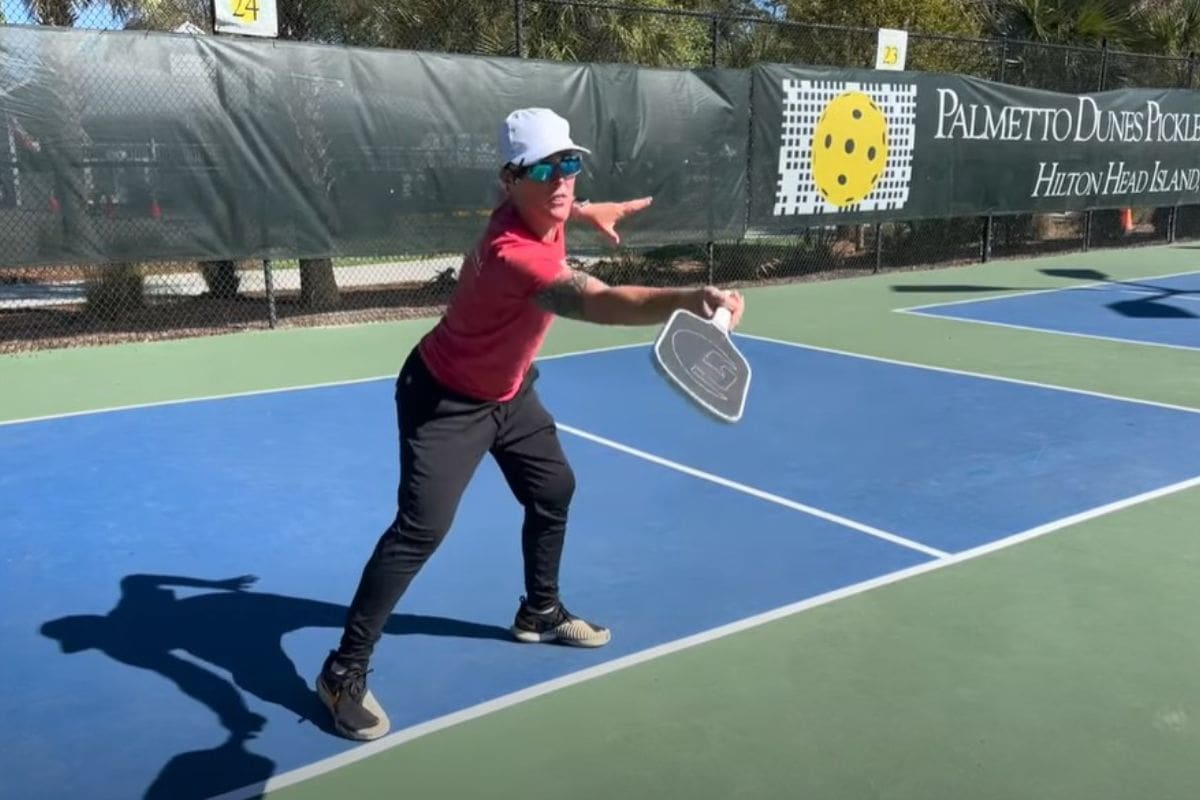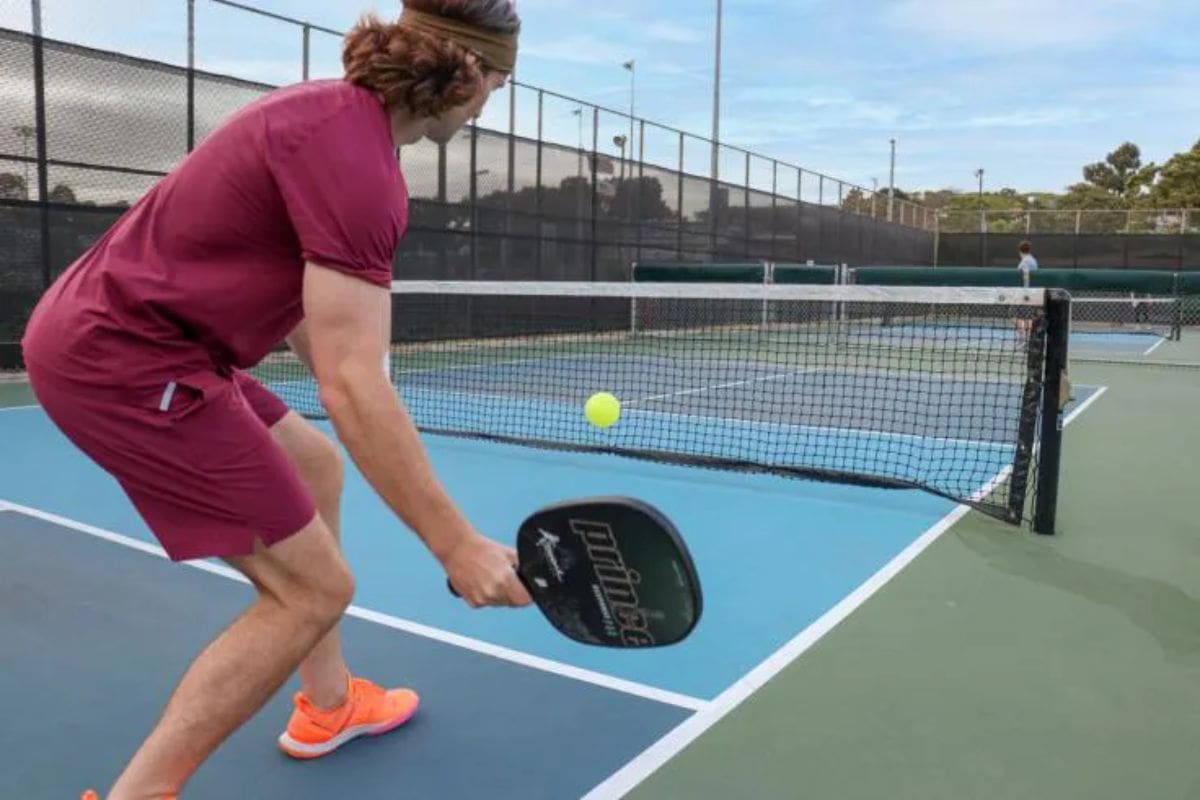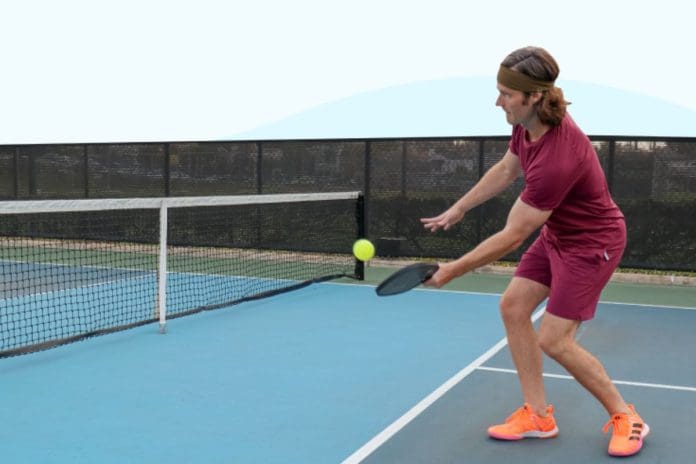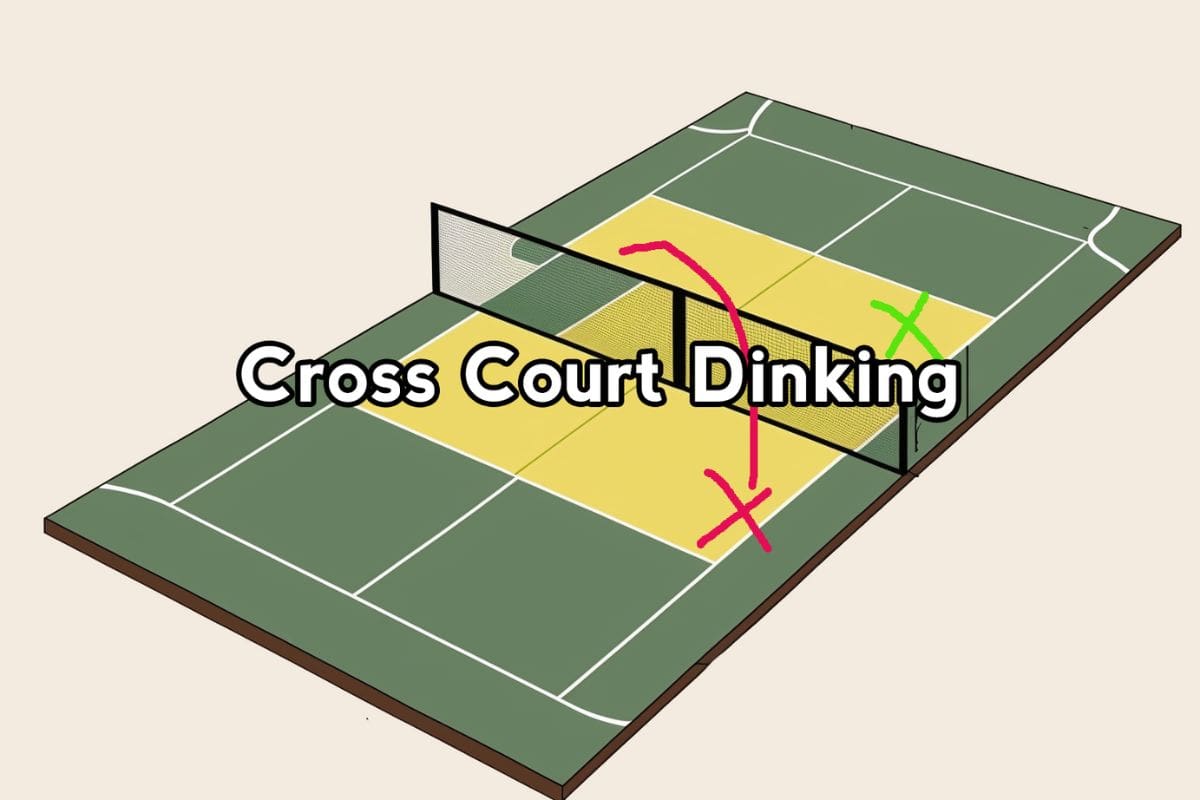Cross Court Dinking in Pickleball: In the ever-evolving world of pickleball, where strategies often shift and evolve, one skill has proven its worth time and again: the cross-court dink. As any seasoned player will tell you, the essence of pickleball lies in its subtle nuances—the fine line between victory and defeat often hinges on the smallest details. The cross-court dink, a seemingly modest shot, embodies this very principle.
The Subtle Brilliance of the Cross-Court Dink
At its core, the cross-court dink is a lesson in precision and strategy. It’s more than just a soft shot played diagonally over the net; it’s a calculated maneuver designed to outwit and outmaneuver your opponent. In a game where power and speed are often celebrated, the dink—especially the cross-court variety—reminds us that sometimes, finesse and strategy are the true game-changers.
Imagine you’re on the court, the score is tight, and the tension is palpable. Here, the cross-court dink can become your secret weapon. It’s a shot that forces your opponent to cover more ground, disrupting their rhythm and creating openings for you to exploit.
Understanding the Cross-Court Dink
To truly appreciate the cross-court dink, we need to dissect it beyond its basic definition. This shot is executed by hitting the ball diagonally across the court, aiming to land it softly in the opponent’s non-volley zone. The beauty of the cross-court dink lies in its ability to create a strategic advantage by stretching your opponent’s coverage area and forcing them into less comfortable positions.
A well-executed cross-court dink does more than just land the ball in the opponent’s kitchen; it manipulates their positioning and opens up opportunities for subsequent shots. The longer distance and the angled trajectory mean that your opponent is often caught off-guard, struggling to return the ball effectively. The precision required for this shot reflects a deep understanding of the game’s tactical elements.

The Craftsmanship of a Perfect Cross-Court Dink
Mastering the cross-court dink requires more than just technical skill; it demands an artful touch and a strategic mindset. Here’s a breakdown of how to execute it flawlessly:
- Positioning and Grip: Start by positioning yourself near the non-volley zone line. A balanced stance with knees slightly bent and feet shoulder-width apart sets the foundation. Use a continental grip on your paddle, allowing for the necessary control and subtle wrist movement to direct the ball precisely.
- Execution: As the ball approaches, use a gentle backswing and an open paddle face. Strike the ball at its lowest point, guiding it diagonally across the court. The key is to maintain a soft touch, ensuring that the ball lands accurately within the opponent’s non-volley zone.
- Control and Variation: The effectiveness of your cross-court dink relies on control and the ability to vary your shots. Incorporate different spins, such as backspin, to decrease the ball’s bounce and make it harder for your opponent to return. Alternating the pace of your dinks keeps your opponent guessing and disrupts their rhythm.
Strategic Application: When and How to Use It
The cross-court dink is not a one-size-fits-all shot; its effectiveness is greatly enhanced when used strategically. Here are some insights on when and how to deploy this technique:
- Studying Your Opponent: Observing your opponent’s strengths and weaknesses is crucial. Pay attention to their footwork, preferred shots, and any areas where they might be vulnerable. Use your observations to target these weaknesses with well-placed cross-court dinks.
- Adapting to Styles: Adjust your dinking strategy based on your opponent’s playing style. Against aggressive players, use soft, low dinks to force them into longer rallies and away from their power shots. Conversely, for defensive players, vary the pace and spin of your dinks to break their rhythm and create openings.
- Timing and Exploitation: Look for moments when your opponent is off-balance or out of position. A well-timed cross-court dink can capitalize on these moments, increasing your chances of scoring or gaining a strategic advantage.
The Pitfalls and Challenges
Despite its effectiveness, the cross-court dink is not without its challenges. Common pitfalls include:
- Over-Hitting: A cross-court dink that is too high or too forceful can become an easy target for your opponent. Focus on keeping your dinks low and within the non-volley zone to avoid giving your opponent an opportunity to attack.
- Predictability: Relying too heavily on cross-court dinks can make your play predictable. Mix up your shots and incorporate different dinking techniques to maintain unpredictability and keep your opponent on their toes.
- Injury and Fatigue: Prolonged use of the cross-court dink, especially in intense matches, can lead to fatigue and potential injuries. Ensure that you balance your dinking practice with other aspects of your game to maintain overall fitness and prevent overuse injuries.
Elevating Your Cross-Court Dinking Skills
To truly excel at cross-court dinking, consider integrating advanced techniques and training into your practice routine:
- Deceptive Shots: Master the art of deception by using subtle paddle movements and body positioning to mask your intentions. This will make it harder for your opponent to anticipate your shots and react accordingly.
- Mixing It Up: Avoid falling into predictable patterns by varying the spin, pace, and angle of your dinks. A diverse dinking repertoire will enhance your effectiveness and keep your opponent guessing.
- Effective Transitions: After successfully executing a cross-court dink, be prepared to transition to other shots, such as powerful drives or lobs. This will help you maintain offensive pressure and capitalize on the openings created by your dinks.
In the grand tapestry of pickleball, the cross-court dink is a thread that weaves together strategy, precision, and finesse. Its mastery requires dedication, practice, and a keen understanding of the game’s subtleties. So, as you step onto the court, remember that each dink is an opportunity to outwit your opponent and elevate your play. Embrace the challenge, refine your technique, and let the cross-court dink become a cornerstone of your pickleball prowess.

News in Brief: Cross Court Dinking in Pickleball
In pickleball, the cross-court is a game-changer that blends precision and strategy. This seemingly modest shot involves hitting the ball diagonally across the court into the opponent’s non-volley zone, creating openings and disrupting their rhythm. Mastery of the cross-court dink requires a balanced stance, a continental grip, and a soft touch to ensure accuracy and control.
Key to its effectiveness is strategic application: use it to exploit opponents’ weaknesses, adapt to their playing style, and capitalize on moments when they’re off-balance. Challenges include avoiding over-hitting, maintaining unpredictability, and preventing injury from overuse. To elevate your skills, practice deceptive shots, vary your dinks, and master effective transitions. The cross-court dink, with its subtle brilliance, can significantly enhance your game, proving that finesse and strategy are as crucial as power and speed in pickleball.
Also Read: Delaware Sports Facilities Receive 11.3M USD for Pickleball Upgrades


